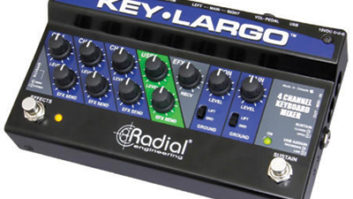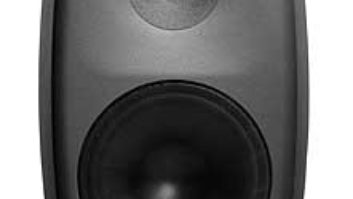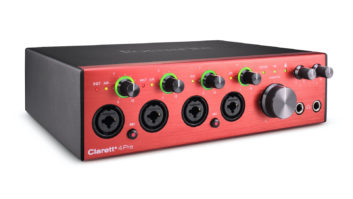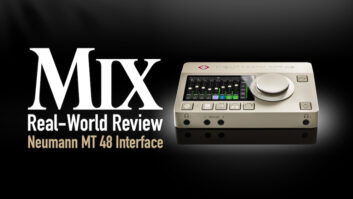The Aurora(n) is the latest offering from Lynx Studio Technology. As a longtime Aurora user (the Aurora 8 has been my primary converter since its release in 2006), I couldn’t wait to see what the next chapter of Lynx’s legacy would reveal.
One of the benefits of the original Aurora was its LSlot technology—a collection of cards that provided nearly every conceivable connectivity option, including ADAT, USB, FireWire, Thunderbolt, AES3, MADI, Dante and DigiLink. Beyond the sound quality, this was the primary reason the device wasn’t quickly outdated like so many other interfaces that came and went during the Aurora’s lifetime. For example, when Thunderbolt replaced FireWire, an Aurora user simply had to update the LSlot card to remain current.
The Aurora(n) is a comprehensive redesign of the original Aurora. Still built around the LSlot technology (it is compatible with the original USB, Thunderbolt, Dante and DigiLink LSlot cards), it has better sounding converters, better clocking and is one of the most flexible interfaces on the market today.

Like the Aurora, the Aurora(n) is a 1U rackmount device. It includes a built-in power supply, display, operational controls and dual headphone amplifiers. Specific configuration is determined by module selection, with each Aurora(n) hosting up to six modules. One of these must be an LSlot card for computer interface, and one must be Lynx’s word-clock module, which provides a single input and three outputs on BNC connectors. This leaves four slots for audio I/O modules. Options include line in/out, digital in/out and mic/line in. The Aurora(n) packs up to 32 I/O into a 1U unit, which can be an amazing space saver, as most manufacturers offer only 8 or 16 channels of I/O per unit (and often in a 2U box). The Aurora(n) Configurator tool on the Lynx website makes it easy to design the interface to your needs by allowing you to select specific configurations for line I/O, mic pre’s, AES I/O and computer interface. The tool calculates the MSRP ($2,099-6,599) for the selected configuration. My review unit, which has an MSRP of $6,099, was equipped with 32 channels of line I/O, along with Pro Tools connectivity. It’s important to note that the per-channel cost of the Aurora(n) is actually less than that of the original Aurora—amazing!
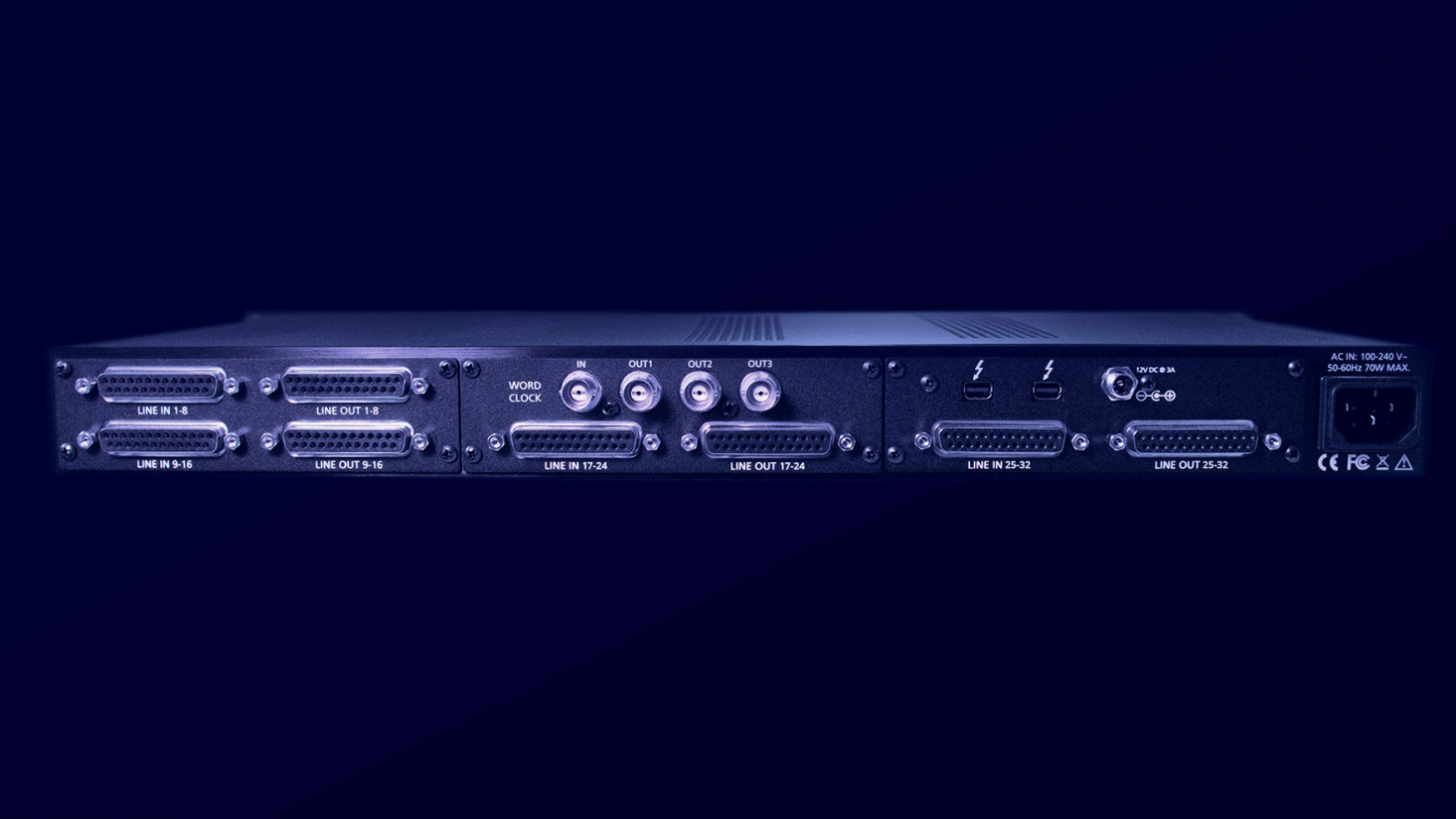
My only complaint with the Aurora(n) is that, as with the original Aurora, only one LSlot card can be installed at a time. The perfect Aurora(n) for me would be one that I use with my Pro Tools HDX rig at the studio but pop out of my rack and use via Thunderbolt with my laptop. Switching from Pro Tools HD to Thunderbolt requires cards to be swapped.
In addition to being a great native audio interface, the Aurora(n) works equally well as a standalone converter and Pro Tools HDX expander. Lynx has provided comprehensive front-panel control over many of its parameters with the assumption that there isn’t necessarily going to be a computer available to control them. In its present form, though, any Aurora(n) parameter that can be adjusted from the front panel can’t also be manipulated from the computer, and vice versa, which might prove inconvenient if you want to keep the Aurora(n) in a separate machine room. Most of the things that are controllable from the front panel are housekeeping functions you wouldn’t need to change very often, but not all. In particular, recording to and playback from the built-in SD card reader is possible only by pressing the buttons on the unit itself. I’m told this situation will not be permanent, and that forthcoming versions of the firmware and software will enable remote control from the computer.
Behind the Scenes at Lynx Studio Technology, by Mel Lambert, Jan. 12, 2010
The primary focal point of the interface’s front panel is a high-resolution color screen. During normal use, I keep the screen parked on one of the meter displays, which I’ve found to be quite useful. To the left of the display are play and record buttons for controlling the built-in SD card recorder. Up and down arrows provide navigation between takes. An additional four buttons and a rotary encoder provide the ability to configure the Aurora(n). Pressing the encoder or hitting the function button activates the configuration menu. Configuration options provide the ability to send test tones to any of the analog output, to toggle the analog inputs and outputs between +4 dBu and -10 dBV standards in banks of four, and to access the routing submenu, allowing the user to select whether the analog outputs are fed from DigiLink playback, SD card playback, direct from the analog inputs or any combination of the three.
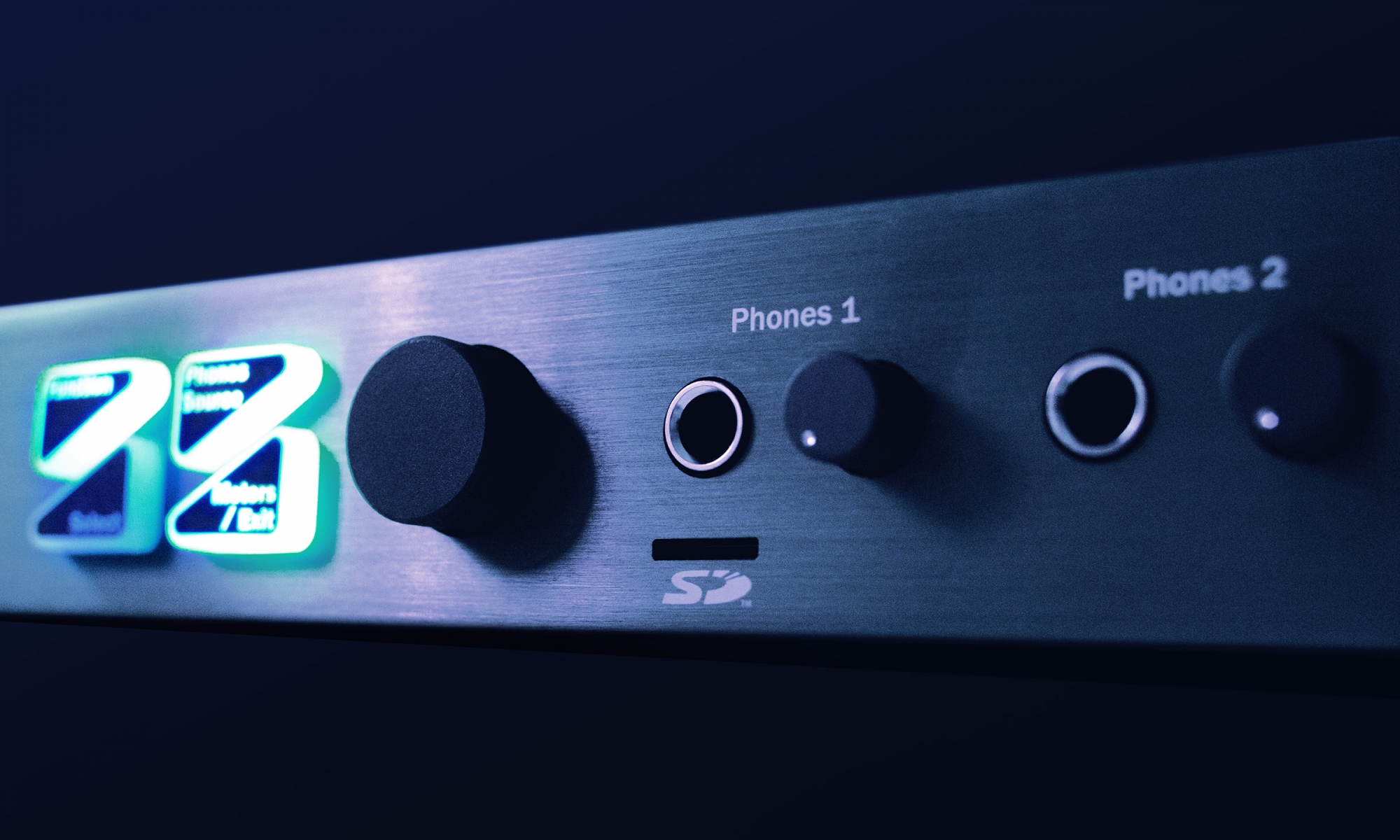
In addition to a host of buttons, the Aurora(n)’s SD card slot, headphone jacks and headphone volume controls are also positioned on the front panel. Both headphone outputs have their own analog level control and are fed from the same stereo bus, which can pick up any pair of channels from the DigiLink playback channels, the analog inputs or the SD card playback. The headphone amps are exceptionally good, providing highly impressive detail and imaging with more than enough power to make any pair of headphones louder than I would ever expect to be necessary.
Studio Review: Lynx Aurora, Hilo and LT-TB LSlot Interface Card, by Russ Long, Aug. 18, 2014
Packing so much into a fanless 1U box results in a device that has the potential to run hot. The box is well vented and Lynx recommends leaving an open rack space above and below the box so it can be passively cooled. I always heeded this advice and I never had any issues with it getting too hot.
The converters in the Aurora 8 and 16 are stunningly good, so I was pleased to find that the converters in the Aurora(n) sound even better. To my ears, the Aurora(n) holds its own against anything out there today, regardless of price.
The big hidden gem feature of the Aurora(n) is its ability to record to a micro SD card completely independent from the computer. I do a lot of location recording, where redundant recording is a necessity, and having the ability to make a redundant recording without a second Pro Tools rig is fantastic. From a live show featuring Jeff Coffin for an NPR Jazz Night in America program to the recording of a Zach Williams prison concert, the micro SD card has worked flawlessly.
Want more stories like this? Subscribe to our newsletter and get it delivered right to your inbox.
The micro SD card recording function is also a great feature in the studio, as it allows you to continually record everything that happens during a session to ensure that no audio magic that happens between takes gets lost in the ether. It also makes sure you are covered in case of a computer crash. My only complaint with the micro SD card functionality is that the ability to format a micro SD card isn’t built into the Aurora(n), so it’s critical that you have a card reader-equipped computer with a formatting utility installed. (Lynx recommends SD Memory Card Formatter 5.0, which is free and works flawlessly.) It’s important to note that the micro SD card feature doesn’t turn the Aurora(n) into a functional multitrack recorder; rather, it’s simply a capture device, as there is no individual track arming, punching, editing and so on.
Anyone in need of a no-compromise interface that has a huge and growing selection of interface options should give the Aurora(n) top consideration, as it won’t disappoint.
Lynx Studio Technology • www.lynxstudio.com
